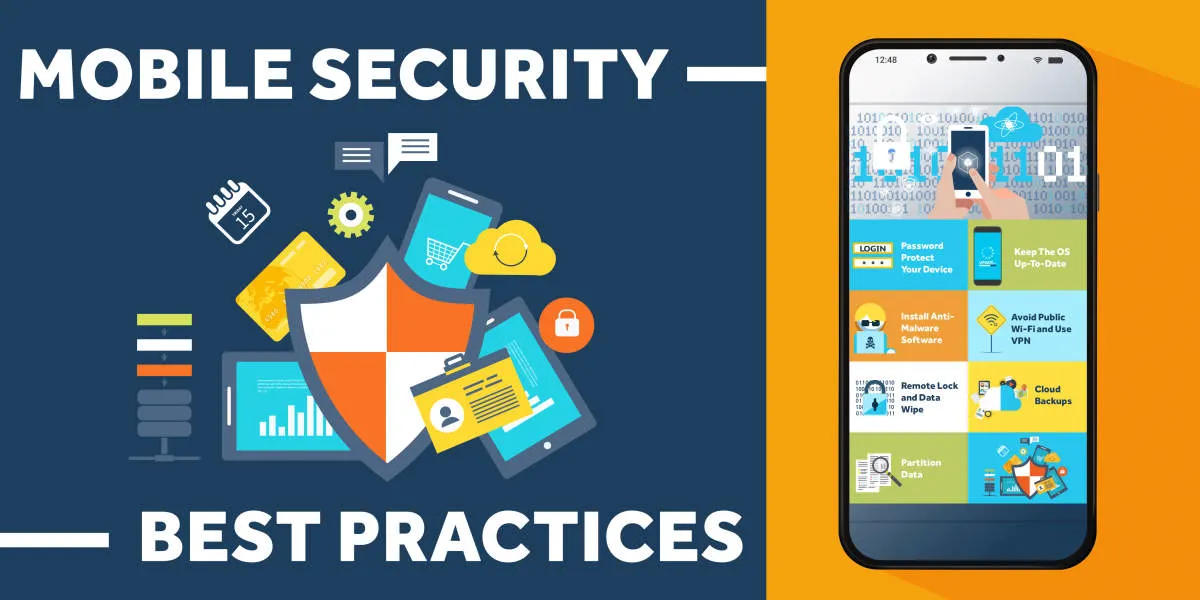When it comes to smartphone security, choosing a device with the best protection is essential. With an increasing number of cyber threats targeting mobile devices, ensuring that your smartphone is equipped with robust security measures is paramount. In this article, we will explore the key factors to consider when selecting a smartphone that offers the highest level of protection for your personal data and sensitive information.
Evaluating Built-In Security Features

When it comes to smartphone security, one of the most crucial factors to consider is the device’s built-in security features. With the increasing threats of hacking, data breaches, and identity theft, it is essential to choose a smartphone that offers robust protection.
Here are some key aspects to evaluate when looking for a device with the best security features:
Data Encryption:
Check if the smartphone offers strong encryption methods for data stored on the device. Advanced encryption ensures that your personal information remains secure, even if the device falls into the wrong hands.
Biometric Authentication:
Look for smartphones equipped with biometric authentication features such as fingerprint scanners or facial recognition. These technologies add an extra layer of protection by allowing only authorized users to access the device.
Operating System Updates:
A device manufacturer that regularly provides security updates and patches for the operating system demonstrates their commitment to maintaining a secure environment. Ensure that the smartphone you choose receives prompt and regular software updates.
App Permissions:
Pay attention to the app permission settings on the smartphone. A secure device allows users to have granular control over app permissions, limiting unnecessary access to sensitive data.
Secure Boot:
Check if the smartphone supports a secure boot function. This feature ensures that only trusted software is loaded during the device startup process, preventing the installation of malicious software.
By evaluating these built-in security features, you can make an informed decision when selecting a smartphone with the best protection against potential threats. Remember, prioritizing security will give you peace of mind and protect your valuable data.
The Importance of Regular Updates
Smartphone Security: Choosing a Device with the Best Protection
In today’s digital age, the security of our smartphones has become paramount. With the rise of cyber threats and the increasing amount of personal information stored on our devices, it is crucial to choose a smartphone that offers the best protection available. One key aspect to consider when assessing the security of a smartphone is its regular update policy.
Regular updates play a significant role in maintaining the security and integrity of a smartphone. Operating system updates, security patches, and firmware updates are released by smartphone manufacturers and software developers to address vulnerabilities and fix bugs that may compromise the device’s security. These updates not only enhance the performance of the device but also provide improved safeguards against potential threats.
By regularly updating your smartphone, you ensure that it remains equipped with the latest security features and protocols. This minimizes the risk of falling victim to malicious attacks such as malware infections, data breaches, or unauthorized access to personal information. Outdated software can leave your device susceptible to known vulnerabilities, which hackers can exploit to gain unauthorized access to your sensitive data.
Additionally, regular updates also bring new features, enhancements, and improvements that contribute to a better user experience. These updates may include improvements to the user interface, battery optimization, performance enhancements, and compatibility with new technologies. By keeping your device up to date, you can benefit from the latest advancements, ensuring a smooth and secure smartphone usage.
Ultimately, choosing a smartphone with a reputation for regular updates is essential in safeguarding your digital life. It is recommended to research the update policies of various smartphone manufacturers before making a purchase. Opt for a device that receives regular updates and has a proven track record of promptly addressing security vulnerabilities.
Choosing Secure Apps and Services
When it comes to smartphone security, choosing a device with the best protection is crucial. With the increasing amount of personal information stored on our smartphones and the rise in cyber threats, it’s essential to prioritize security when selecting apps and services for your device.
Here are some key points to consider:
1. Research the App or Service
Before downloading any app or subscribing to a service, it is important to conduct thorough research. Read user reviews, check online forums, and verify the developer’s reputation. Look for apps and services that have a history of providing regular security updates and have strong privacy policies in place.
2. Only Download from Trusted Sources
Stick to official app stores such as Google Play Store or Apple App Store. These platforms have strict security measures in place to prevent malicious apps from being listed. Sideloading apps from third-party sources increases the risk of downloading malware or compromised software.
3. Check Permissions
Pay attention to the permissions an app or service requests during installation. Ensure that the permissions requested align with the app’s functionality. Be cautious if an app requests excessive permissions that seem unnecessary for its intended purpose.
4. Enable Two-Factor Authentication
Implementing two-factor authentication adds an extra layer of security to your accounts. It requires you to provide a second piece of information, such as a verification code sent to your phone, in addition to your password. Enable this feature whenever possible to prevent unauthorized access.
5. Regularly Update Apps and Services
Keep your apps and services up to date to ensure you have the latest security patches. Developers often release updates to address vulnerabilities and improve overall security. Enable automatic updates on your device to simplify this process.
6. Use Antivirus Software
Consider installing reputable antivirus software on your smartphone. These apps can detect and eliminate malware, protect against phishing attempts, and provide real-time scanning for potential threats.
By following these guidelines and making security a priority, you can significantly reduce the risk of falling victim to cyber threats on your smartphone. Stay informed, stay vigilant, and always prioritize the safety of your personal information.
Data Encryption and Privacy
In today’s digital age, smartphone security is paramount. With the increasing dependency on mobile devices for various tasks, it’s crucial to choose a device that offers the best protection. One of the key aspects of smartphone security is data encryption and privacy.
Data encryption plays a vital role in safeguarding sensitive information stored on smartphones. It involves the process of converting data into a code to prevent unauthorized access. By encrypting data, even if someone gains access to your device, they won’t be able to decipher and misuse your personal information.
When selecting a smartphone, it’s essential to opt for a device that offers robust data encryption features. Look for devices that come with built-in encryption capabilities, such as hardware-based encryption or trusted platform modules (TPMs). These technologies ensure that your data is stored securely, making it significantly harder for hackers and cybercriminals to breach your privacy.
Beyond data encryption, another crucial aspect to consider is privacy features. Many smartphones now come with advanced privacy settings that allow users to control the data they share with third-party apps and services. These settings enable you to limit permissions, choose which apps can access sensitive information like your location or contacts, and manage data sharing preferences.
Furthermore, be sure to select a smartphone that receives regular security updates and patches from the manufacturer. These updates often include important bug fixes, vulnerability patches, and security enhancements. Regular updates ensure that your device stays up-to-date with the latest security measures and protections.
To sum up, when it comes to smartphone security, prioritizing data encryption and privacy is crucial. Look for devices that offer strong encryption capabilities, advanced privacy settings, and timely security updates. By making an informed choice, you can ensure that your personal data remains secure and private in an increasingly connected world.
Tips for Secure Mobile Payments
In the era of digital advancements, smartphones have become an integral part of our lives. With mobile payments becoming increasingly popular, it is crucial to prioritize smartphone security when choosing a device. Here are some essential tips to ensure secure mobile payments:
1. Choose a Trusted Brand
Opt for smartphones from trusted brands that prioritize security features and regularly release software updates. Popular brands often invest significantly in research and development to enhance device security.
2. Keep Software Up to Date
Always keep your smartphone’s operating system and mobile payment apps up to date. Updates often include security patches that protect your device from potential vulnerabilities.
3. Enable Multi-Factor Authentication
Utilize the multi-factor authentication feature offered by mobile payment services. This adds an extra layer of security by requiring a secondary verification step, such as a fingerprint or passcode, to authorize transactions.
4. Use Secure Networks
Avoid making mobile payments on public Wi-Fi networks, as they may expose your sensitive information to hackers. Instead, use a secure and trusted network or enable your smartphone’s hotspot for a secured connection.
5. Be Cautious of Suspicious Apps
Only download mobile payment apps from official app stores, such as Google Play or the Apple App Store. Be vigilant of apps from unknown sources, as they may contain malware or spyware that can compromise your device’s security.
6. Set Strong Passwords
Use strong, unique passwords for both your mobile payment apps and your smartphone’s lock screen. Avoid using easily guessable passwords and consider using a password manager to securely store your passwords.
7. Regularly Check Transaction History
Monitor your mobile payment transaction history regularly. If you notice any unauthorized or suspicious activity, report it immediately to your mobile payment service provider.
By following these tips, you can ensure a secure mobile payment experience. Stay vigilant, keep your device updated, and prioritize your smartphone’s security to protect your financial information.
Balancing Convenience and Security
In today’s digital age, smartphone security has become a critical priority for users around the globe. With the increasing reliance on smartphones for various activities such as communication, banking, shopping, and more, it is crucial to choose a device that offers the best protection without compromising convenience.
When it comes to smartphone security, two key aspects need careful consideration: convenience and security. While convenience allows for easy and seamless user experience, security ensures the protection of personal information and data from potential threats.
On one hand, users seek convenience in their smartphones. They want devices that are user-friendly, with intuitive interfaces and fast performance. Manufacturers, in response to this demand, often prioritize convenience features such as biometric authentication, facial recognition, and quick access to apps and services. These features make the overall smartphone experience more convenient and enjoyable.
On the other hand, strong security measures are paramount to safeguarding sensitive data. This includes protection from hackers, malware, and unauthorized access. Smartphone manufacturers have recognized the importance of security and have introduced features like encrypted storage, secure boot, and regular software updates to enhance device security.
However, striking the right balance between convenience and security is a constant challenge. Raising security measures to the highest level may lead to cumbersome authentication processes, making day-to-day usage less convenient. Conversely, prioritizing convenience may compromise the device’s security, leaving personal information vulnerable to cyberattacks.
Thus, users should carefully evaluate their personal needs and priorities when choosing a smartphone. It is essential to find a device that provides a good balance between convenience and security. Opting for smartphones with robust security features while maintaining user-friendly interfaces can help mitigate potential risks while still offering a convenient user experience.
In conclusion, achieving the right balance between convenience and security is crucial when selecting a smartphone. By understanding the importance of both aspects and considering the trade-offs, users can make informed decisions and ensure they have a device with the best protection for their digital lives.
Conclusion
When it comes to smartphone security, it is crucial to choose a device that offers the best protection. With the increasing number of cyber threats, it is essential to consider features such as biometric authentication, regular software updates, and robust encryption. By investing in a smartphone with top-notch security measures, users can ensure their personal data remains safe and secure.



